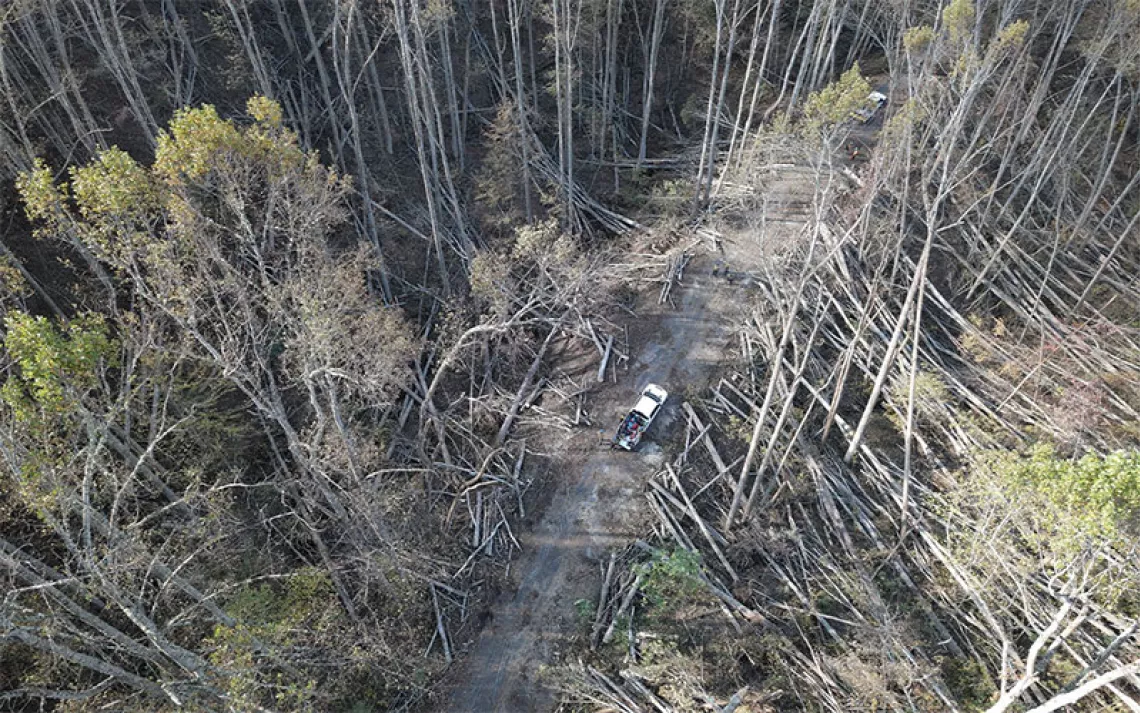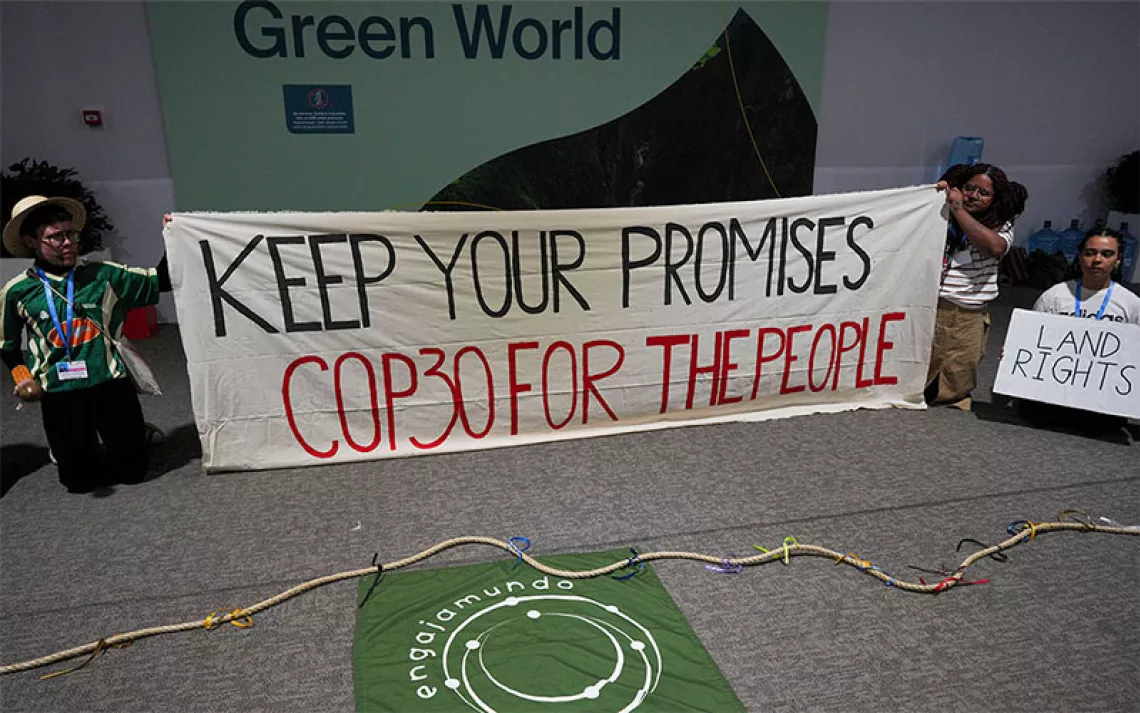Climate Could Hit a Tipping Point Sooner Than You Think
The planet’s ability to uptake carbon could decline after 2060

Photo by eolintang/iStock
Climate scientists have long warned about a global warming tipping point, when the planet reaches a threshold of irreversible climate change and the worst effects—extreme drought, sea level rise, monster wildfires and hurricanes—become not the exception but the norm. Some experts once projected such a threshold could happen in the 22nd century or beyond. But according to a raft of new studies, that tipping point could be as close as 40 years away.
The latest, a Columbia Engineering report published in Nature this week, projects that the planet’s capacity to take in the carbon dioxide, and in particular that produced by human activity—such as the burning of fossil fuels and deforestation—could begin to decline starting in 2060. If those projections prove true, it would create a destructive land-atmosphere feedback loop that could dramatically accelerate the worst effects of global warming.
Anthropogenic, or human-caused, greenhouse gases such as carbon dioxide are already impacting the earth’s climate system, with extreme heat waves, wildfires, droughts, and hurricanes—as well as coastal flooding from global sea level rise—increasing in both frequency and intensity. That’s despite the fact that currently the planet acts as a carbon sink, absorbing roughly half the carbon produced by all human activity: The world’s oceans absorb 25 percent of that CO2, and the rest is taken up by the terrestrial biosphere—plants, trees, soils.
What climate scientists don’t know with certainty, however, is how long the planet’s biosphere can keep absorbing human-produced carbon, and at what rate it can do so, should we continue to produce greenhouse gas emissions unabated.
Researchers at Columbia set out to solve that puzzle with a novel gambit: They looked at the relationship between soil moisture and land-carbon uptake, directly examining the impact of carbon on long-term moisture shifts in the planet’s biosphere, projecting those impacts out to the end of this century, and quantifying the effects.
The results are alarming: According to their models, the rate at which the earth’s terrestrial biosphere absorbs human-produced carbon will begin to decline by 2060 if we are unable to get a handle on greenhouse gas emissions.
“This study is showing that during the 21st century, we might hit a peak in the ability for the biosphere to uptake carbon,” Julia K. Green, a PhD candidate in earth and environmental engineering at Columbia University and one of seven coauthors of the study, said in an interview. “This points out the urgency to start tackling it now and not waiting. We’re not talking about something that is centuries off. We’re talking about something that could happen in the next 50 to 100 years.”
Interestingly, the study suggests that land vegetation will actually be able to absorb carbon at an increasing rate for the next 40 years due to a process known as carbon fertilization. The production of more C02 in the atmosphere will increase the rate of plant photosynthesis, during which plants uptake carbon; as a result, the biosphere will uptake more and more carbon as human-produced emissions increase. However, the study’s models project that the biosphere’s ability to do so peaks in 2060 and then starts to decline.

Courtesy of Columbia Engineering
The answer to why we may hit that 2060 peak point, researchers found, lies in a variety of factors, including the relationship between soil moisture and land carbon uptake, water limitation, and the impact of global warming trends on both. Extreme weather events like droughts and heat waves can reduce the ability of vegetation to uptake carbon: Photosynthesis shuts down, which means plants are taking in less carbon, and vegetation mortality during extreme heat releases carbon into the atmosphere. Also, when plants are not engaged in photosynthesis, they are also not releasing water into the atmosphere (a process known as transpiration), which has a cooling effect.
If the uptake rate declines, and if we do nothing to curb greenhouse gas emissions, more CO2 will remain in the atmosphere, which will accelerate global warming while other forms of climate change are already underway, such as the melting of the Antarctic sheets and permafrost being released from Greenland—and a destructive climate feedback loop will ensue.
The Columbia study came out just days after scientists reported, in a paper published on Monday, that the melting of Greenland’s ice sheet is accelerating as the Arctic warms at twice the average rate of the rest of the planet—yet another indicator that the planet may be moving closer to a climate tipping point.
While the Columbia study’s findings are alarming, Green worries not just that the models’ calculations will prove correct, but that they will end up being too conservative. Some studies have shown that the effects of carbon fertilization are not as great as these models are predicting, she says, while the effects of soil moisture might be underestimated. If that proves true, the planet’s ability to uptake carbon could actually decline sooner than 2060.
“There are people who don’t believe in climate change, and as a researcher, it’s frustrating,” she says. “This is a real thing that could happen within our lifetimes. People need to pay attention to it and try to avoid getting to this point.”
 The Magazine of The Sierra Club
The Magazine of The Sierra Club



